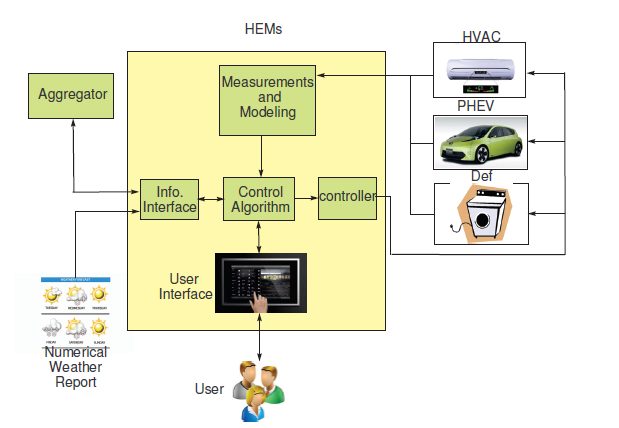Home charging Electric Vehicles models and impacts on distribution systems
The most commonly used charging method would be charging at home using level 1 or level 2 charging outlets. In this section, we present the charging framework of a single EV in a residential house. Figure 2.6 shows the main architec-

Figure 6: Architecture of home energy management system
ture of a home energy management system (HEMs). A complete home energy management system should be able to optimally control the charging of EVs and other appliances according to the desire of users and the information collected from the electricity aggregator and other sources. The complete HEMs should include the following functions.
• Direct Control: Sends the real time control signal to EVs and other end-use devices or controls the operation status directly.
• Measurements, Modeling and Prediction: Takes measurements of loads and models the behavior of EVs as well as the human activity patterns. Predicts into the future about the behavior of EVs and other information.
• User Interface: Provides customers with statistics on the power usage and allows users to adjust the settings.
• Information Interface: Exchanges price, power profile and weather information with aggregators and numerical weather stations.
• Control Algorithm: Optimally schedule the EV charging and control of other devices to maintain the comfort level of users subject to power limits, budget constraints and physical constraints.
Within this architecture, users upload the charging amount of EVs, the deadline at which EVs leave home, and other daily load profile through HEMs and aggregators determine and release the real-time electric price or direct control signal based on the profile collection. Taking in price signals and numerical weather reports, HEMs schedules the charging of EVs and allocates power to other end devices to maintain the comfort level and finish task required by users.

Home charging Electric Vehicle

